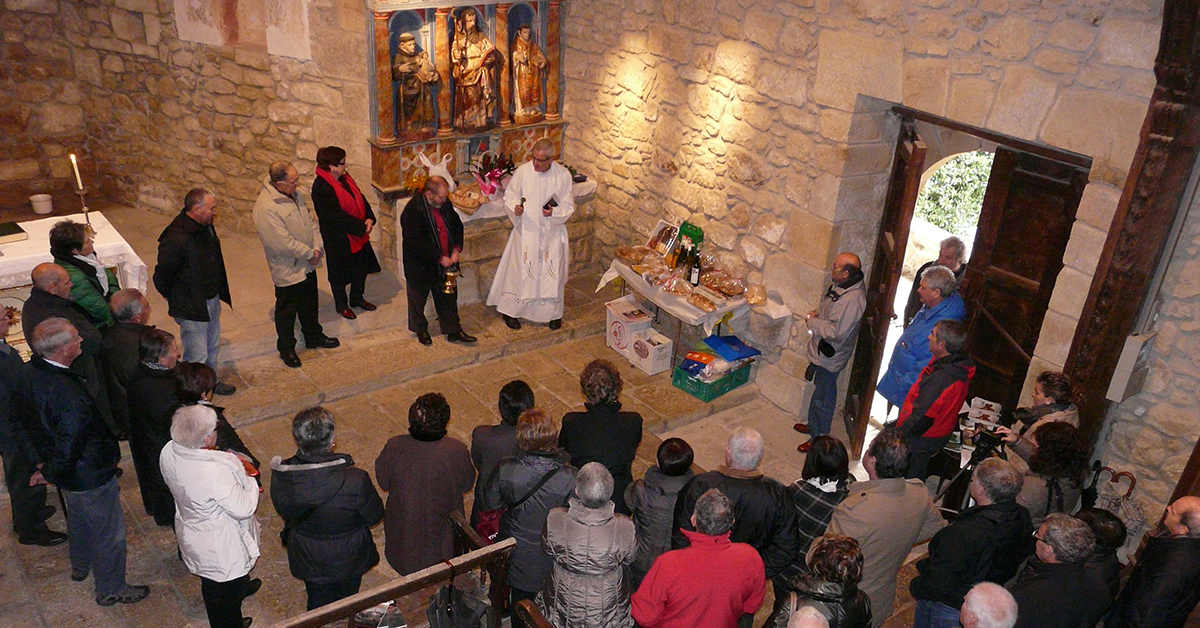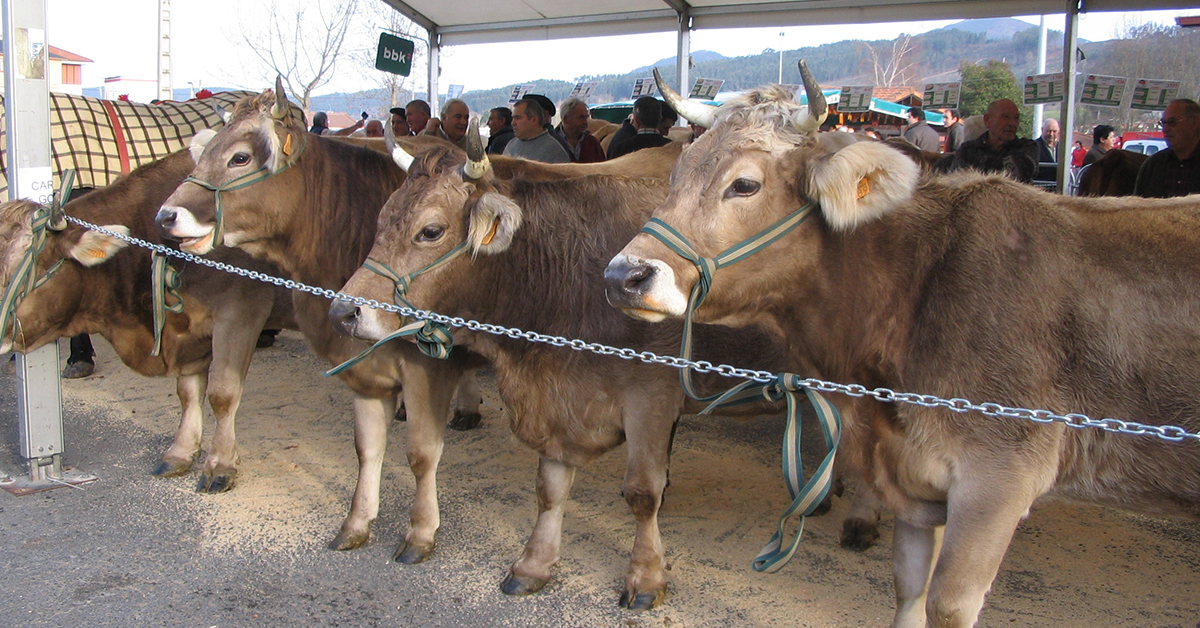Basque ethnography at a glance

Blessing of products for auction. Garai (Bizkaia), 2013. Igone Etxebarria. Labayru Fundazioa Photographic Archive.
The feast day of St. Anthony Abbot is in the dead of winter on 17 January (the 13 June is the feast day of St. Anthony of Padua). Once Christmas is over and in the run-up to Carnival, there is a series of festivities that are deeply rooted in the life of our baserritarras (people living on the farmsteads): along with St. Anthony, Candlemas is on 2 February, St. Blaise on the 3rd and St. Agatha of Sicily on the 5th of the same month. French toast is usually eaten on all of them and, to a certain degree, they are all part of the Carnival season that is just around the corner.
In the case of St. Anthony, he is very beloved as he protects animals. He has been a renowned saint and his feast day is particularly important in those places where livestock has been a mainstay of the local economy.
There are a great variety of customs and rites surrounding the festivity: a bonfire was lit on the eve before, meat was smoked using the Yule log, food and animals are blessed…
Animals have been usually rested on the feast day. Thus, the oxen were not taken to the market garden, flour was not milled so the donkeys could rest, and if any deal was done, people would say San Antonek gorde daiala (May St. Anthony protect it).
The livestock brotherhoods have often been known as a Brotherhood of St. Anthony and they have usually marked the festivity or gathered together to eat.
The local baserritarras would go to Urkiola, where a large fair was held and farm animals blessed. Bread, representing market gardens and food, continues to be blessed nowadays. Water and oil also used to be blessed, along with the bells that were worn by the livestock. Candles and masses were likewise offered to protect the farmsteads’ animals.

St Anthony’s Livestock Fair. Mungia (Bizkaia), 2017. Akaitze Kamiruaga. Labayru Fundazioa Photographic Archive.
San Antontxu is the large fair in Mungia held mainly on the following day (18 January). Alongside the livestock fair, local produce, machines and tools, and a whole range of farm products are on show. This local festivity is celebrated in style by the people from Mungia and the surrounding area on the day itself and the whole weekend.
The custom of holding an auction on St. Anthony’s Day still carries on in Garai, in the Duranguesado region. The villagers take food and beverages (French toast, pork products, beans, hens, cider, etc) from their homes. The products are blessed during the mass and then auctioned off in the church porch. The strange thing is that each resident often bids for their own produce and so takes their products back home. The money gathered has been used for different purposes: parish repairs, a charitable act through the church or for a specific group, for example, when there has been a tragedy somewhere in the world.
Let us end with a few sayings to do with St. Anthony: “St. Anthony, piles of bream”; or “San Antonio, San Antonio txarria gaixo danean; San Antonio ez dau inok esaten odolostea jaten danean” (St. Anthony, St. Anthony is invoked when the pig is sick; nobody calls on St. Anthony when they eat black pudding).
Igone Etxebarria
Labayru Fundazioa

